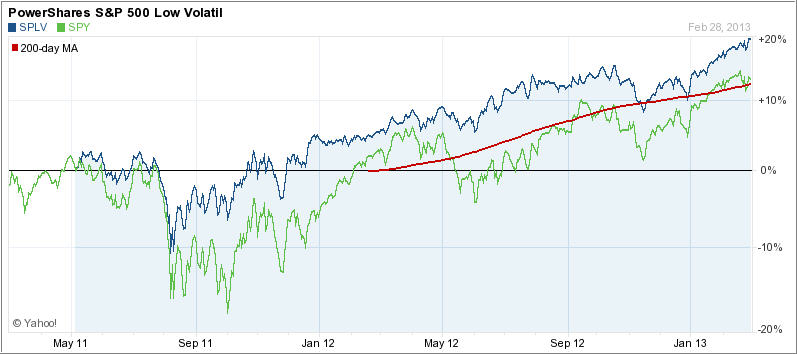 State Street Global Advisors, the Boston, Massachusetts-based second largest ETF provider globally, has launched two low volatility funds, the SPDR Russell 1000 Low Volatility ETF (LGLV) and the SPDR Russell 2000 Low Volatility ETF (SMLV), marking its entry into the low-volatility large-cap and small-cap US equity space.
State Street Global Advisors, the Boston, Massachusetts-based second largest ETF provider globally, has launched two low volatility funds, the SPDR Russell 1000 Low Volatility ETF (LGLV) and the SPDR Russell 2000 Low Volatility ETF (SMLV), marking its entry into the low-volatility large-cap and small-cap US equity space.
The funds track the low volatility versions of the widely followed Russell 1000 and Russell 2000 indexes, which measure the performances of the large-cap and small-cap low volatility segment of the US market and were once used in Russell ETFs that were liquidated last year. Both the funds are designed to neutralize factors such as beta and momentum while managing turnover, according to the company’s press release. The Russell 1000 Low Volatility Index contains no more than 200 securities while the Russell 2000 Low-Vol Index contains no more than 400 securities. Both the indices are reconstituted monthly to maintain focus on low volatility.
Low-vol products have found favor with investors for their superior risk-adjusted returns and is likely to appeal to people who want to reduce their downside risks amid current state of affairs where geo-political risks run high both at home and abroad.
Interestingly, the launches come days after Invesco Powershares launched two new low volatility ETFs, the PowerShares S&P MidCap Low Volatility Portfolio (XMLV) and the PowerShares SmallCap Low Volatility Portfolio (XSLV) and will face tough competition from the most popular PowerShares S&P 500 Low Volatility Portfolio (SPLV), the first low-vol ETF that boasts of $3.4 billion in assets under management.
If you missed my previous post on it, here’s what the chart looks like when comparing SPY (the S&P 500 ETF) with its low volatility cousin SPLV:
 Chart courtesy of Yahoo.Finance
Chart courtesy of Yahoo.Finance
Not only is volatility better controlled for the period shown but performance has been superior as well.
The SPDR Russell 1000 Low Volatility ETF (LGLV) looks to follow the Russell 1000 Low Volatility Index and invests in a portfolio of 93 low-volatility large capitalization stocks, based on volatility measured in the previous 252 days. The portfolio allocates nearly 21 percent of total assets in top 10 holdings with Heinz, General Mills, Kimberly Clark, Proctor & Gamble and Johnson & Johnson occupying the top five slots.
Sector-wise, consumer staples, healthcare, industrials, utilities, financials, information technology, energy, telecom and materials and provides exposure to a well diversified variety of securities. The fund (LGLV) has an expense ratio of 0.20 percent.
The SPDR Russell 2000 Low Volatility ETF (SMLV) tracks the Russell 2000 Low Volatility Index, which measures the performance of the US small capitalization low volatility market. Currently SMLV holds 170 securities in the basket.
Ryman Hospitality Pptys Inc, Sothebys, Uns Energy Corp, Pool Corporation and Tenneco Inc are the top five holdings. SMLV has a greater bias toward financials while utilities, industrials, consumer discretionary and information technology make up the next top four spots.
SMLV has an annual expense ratio of 0.25 percent.
Given the never ending volatility in the market place, I very much favor low volatility ETFs. They compliment trend tracking in that they can avoid a whipsaw signal due to their greater stability, which means we can remain in the market when a pullback does not turn into a major trend reversal.
Disclosure: No holdings
Contact Ulli
